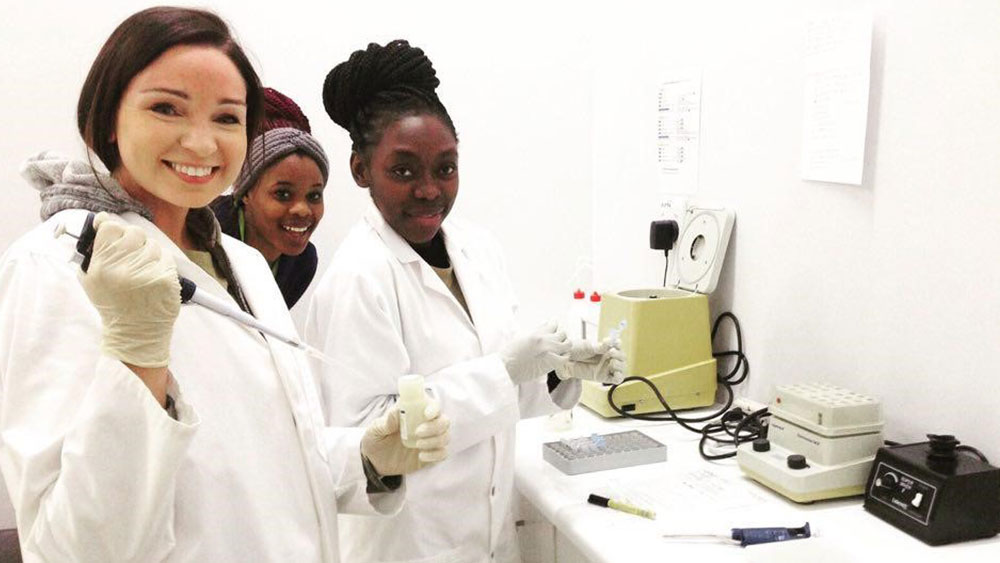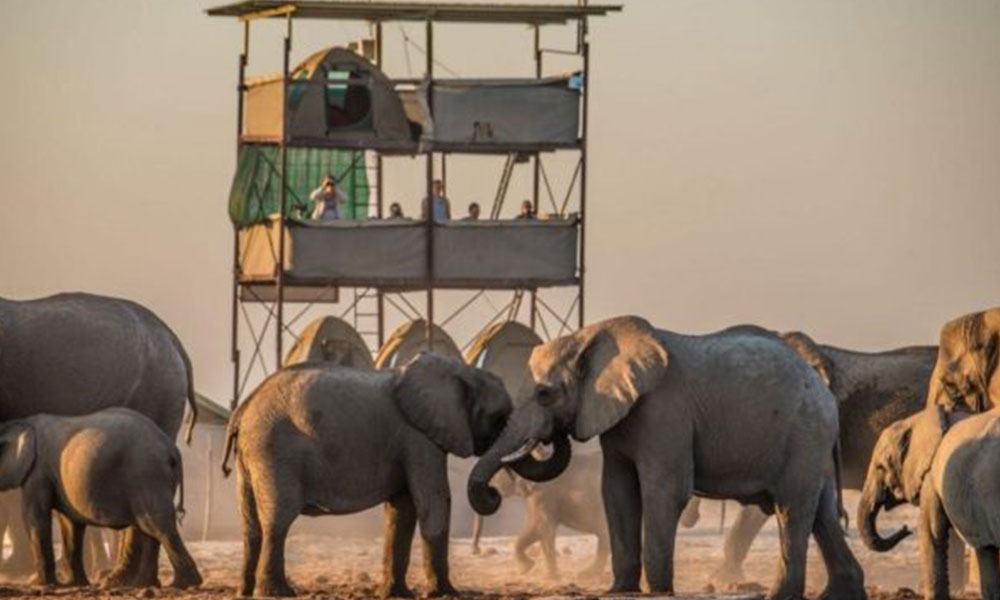The Dung and DNA Diaries: My Time at CCF
-

- by Katie Lawlor September 5, 2018

When Dr. Caitlin O’Connell-Rodwell, a world-renowned expert on elephants and an adjunct professor with the Stanford University School of Medicine, first invited me to travel to Africa with her research team in the summer of 2017, I immediately agreed. My lifelong interest in animal welfare and wildlife conservation had previously led me to positions with NBC News in New York and Beijing, the U.S. Department of State, and most recently Koko and The Gorilla Foundation. Seeing reports of Africa’s poaching crisis and illegal ivory trade fueled my urgency to experience the world’s largest land mammals in their natural environment. Once we arrived in Namibia’s Etosha National Park my role was to record the interactions of the elephant family groups that frequented the Mushara water hole, identify individual members, and collect their dung samples for future DNA analysis. Although I was 10,000 miles away from home without access to a telephone, the internet, electricity, or running water, I was elated to contribute to the advancement of knowledge regarding elephants’ cognitive functioning and emotional states.

Fast forward one year and I was at home in Northern California, preparing to defend my doctoral dissertation in clinical psychology when Dr. O’Connell-Rodwell sent me an exciting email; would I want to head back to Namibia to begin analyzing the dung samples …and could I depart in a few weeks?! Within a few hours of her message I had cleared my schedule for the next month and began to research my home base for the length of my stay: the Cheetah Conservation Fund and its Life Technologies Conservation Genetics Laboratory, the only fully-equipped genetics lab in situ at a conservation facility in Africa. Here I learned to carefully extract DNA from elephant dung and perform a polymerase chain reaction (PCR) to generate thousands of copies of specific DNA sequences of interest. I was then shown how the results of the PCR are loaded into the lab’s genetic analyzer machine which utilizes capillary electrophoresis to separate the alleles, two or more alternative forms of a gene that are found at the same place on a chromosome, by size. This process ultimately allows us to identify individual elephants, determine family structure, examine relatedness of the current Etosha elephant population, and create a pedigree tree.
My time at Mushara and now CCF has fostered my growth not only as a researcher, but as an individual who cares deeply about protecting the glorious creatures that share this earth with us.
Not only did I gain confidence in performing skilled laboratory procedures and cheetah husbandry, I also had the privilege to participate in a cheetah and a honey badger necropsy. I observed the giraffes who live in the shadow of the Waterberg Plateau, and helped care for the staff horses. I spent my evenings at CCF huddled around the campfire listening to veterinarians, scientists, and ecologists from around the world discuss their dedication to finding lasting solutions to the critical issues that impact Africa’s wildlife and ecosystems, for example the human-wildlife conflict in encroaching farming regions. Overall, my experiences in Africa have provided me with the motivation to wholeheartedly pursuit this vital work, and I have felt immensely grateful for the opportunity to have gained a deeper understanding of the natural rhythm of life here.
Related Reading
-
December 3, 2023
Paws, Prints and DNA: Chronicles of a Genetics Intern -
June 15, 2023
Internship in the Ecology Department -
June 10, 2023
An Internship with Naughty Goats and Chocolates




